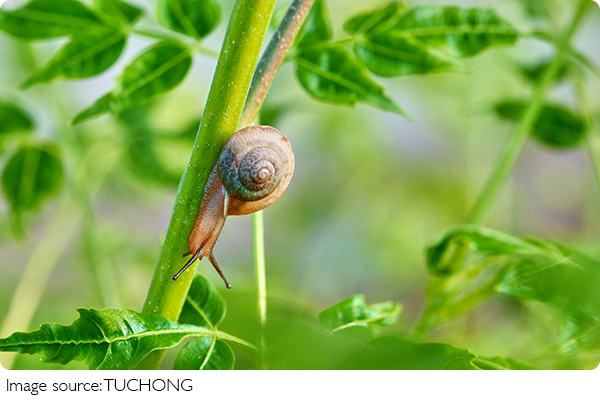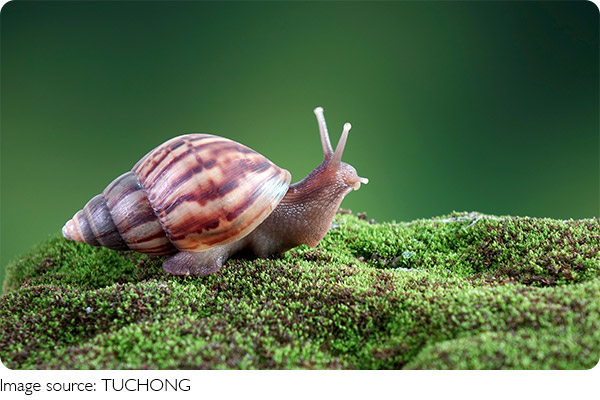Snail Survival Secrets

Hey Lykkers! 🐌 Have you ever imagined surviving for years without eating or drinking anything? Sounds impossible, right?
Well, for snails, it's just part of their amazing life skills. Today, let's dive into how these tiny creatures manage to pull off such an unbelievable survival trick!
Slow down with Snails and Slugs | Relax With Nature | BBC Earth
Video by BBC Earth
What Is Snail Hibernation?
When the environment becomes too harsh — like during freezing winters or scorching dry seasons — many snails simply "pause" their lives. This deep sleep-like state is called hibernation (or estivation if it's in hot weather). During this time, snails almost completely shut down their body functions to conserve energy and moisture.
How Long Can Snails Hibernate?
Believe it or not, some snails can stay in hibernation for months, or even several years! There are records of desert snails waking up after four or five years. Imagine going to sleep today and waking up in 2029! It's not magic — it's all thanks to their extremely slow metabolism and their amazing ability to seal themselves inside their shells.
Why Do Snails Need to Hibernate?
Snails are very sensitive to temperature and humidity. When it's too dry, they risk losing water through their soft bodies. When it's too cold, their physical processes slow down to a crawl. Hibernation protects them by minimizing energy use and preventing dehydration. It's like putting their entire life on "pause" until the world becomes friendly again.
How Do Snails Prepare for Hibernation?
Before entering hibernation, snails often find a safe, moist, and hidden spot, like under leaves, inside soil, or behind rocks. Then, they secrete a special mucus layer that hardens into a thin door called an epiphragm. This little door helps keep moisture inside their shells and blocks out the dry air or cold winds outside.
What Happens Inside the Shell?
Inside the shell, the snail's heart rate drops dramatically, breathing nearly stops, and all body activities slow down to the bare minimum needed for survival. They don't need food or water because their body uses stored energy very, very slowly. It's like running your phone on ultra power-saving mode for years!
Do Snails Wake Up Easily?
When the weather becomes warm and moist again, snails slowly start to wake up. The epiphragm softens and falls away, and the snail stretches out, ready to return to its normal, slow-moving life. Waking up can take a little time — after all, they've been in a deep sleep for ages!
Snail Hibernation vs. Estivation
Depending on the environment, snails can either hibernate (in cold, dry winters) or estivate (in hot, dry summers). The idea is the same — survival during tough times. Whether they're hiding from freezing winds or blazing sun, snails have the perfect built-in system to ride it out.
Fun Facts About Snail Hibernation
• Some land snails have been found perfectly alive after being glued onto museum cards for years — they simply woke up when exposed to moisture again!
• Not all snails hibernate. Tropical snails living in stable, warm environments usually don't need to.
• Hibernation also protects snails from predators. A sealed shell is much harder for many hunters to break open.

Lykkers, isn't it amazing how these tiny creatures have such big survival tricks? 🐌 Next time you see a little snail resting on a rainy day, you'll know — it might just be waking up from a very long nap! Have you ever spotted a snail tucked away somewhere? Tell us your story!
-
 Safely Engage in BeekeepingUrban Beekeeping: The Buzz About Safe and Fun Family-Friendly Hives!
Safely Engage in BeekeepingUrban Beekeeping: The Buzz About Safe and Fun Family-Friendly Hives! -
 Secrets of StarfishThey Can Regrow Arms?! Discover the Astonishing Secrets Hiding Beneath the Sea in the Life of the Starfish!
Secrets of StarfishThey Can Regrow Arms?! Discover the Astonishing Secrets Hiding Beneath the Sea in the Life of the Starfish! -
 Whales Speak DeeplyCan Whales Really Talk to Each Other Across Oceans? The Truth Behind Their Mysterious Deep-Sea Language Will Surprise You!
Whales Speak DeeplyCan Whales Really Talk to Each Other Across Oceans? The Truth Behind Their Mysterious Deep-Sea Language Will Surprise You!